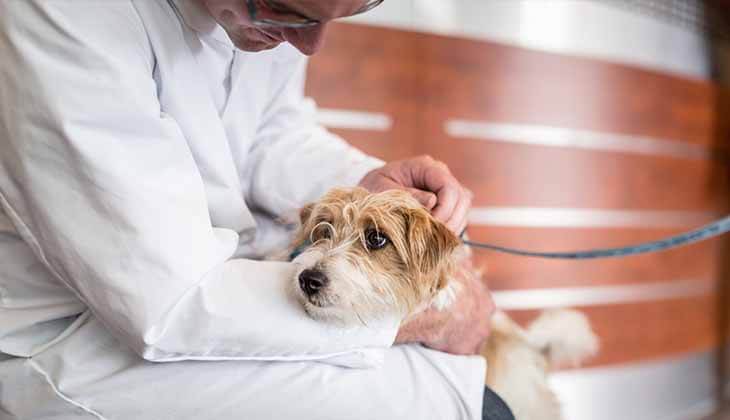The Truth about Ticks:
They Can Transmit Blood Parasites to Your Dog – Part 2
HEALTH & PROTECTION
28 Feb, 2022
5 minutes

BABESIA – A DANGEROUS BLOOD PARASITE THAT SPREADS TO DOGS THROUGH TICK BITES
In Part One we learned about a dangerous risk our beloved canine friends face from ticks. Babesiosis is a dangerous and sometimes deadly disease that spreads through tick bites. In part 2 we bring you information on signs to watch for, disease treatments, and advice for keeping your precious pup protected from this blood parasite.
CAN A DOG BE INFECTED WITH BABESIA AND NOT SHOW SIGNS?
INFECTION VS DISEASE
Yes, dogs can be infected with Babesia and not show any signs – this is called a subclinical infection. However, if a dog develops a different health problem, this can sometimes lead to the Babesia infection becoming more serious at the same time.
Dogs with subclinical disease can still give the Babesia parasites to ticks when they are bitten, and these ticks can go on to infect other dogs who could become sick.

WHAT SIGNS DOES A SICK DOG SHOW AND WHY?
HOW DOES THIS PARASITE CAUSE DISEASE?
Babesiosis infection in dogs can cause signs that range from no effect in a subclinical infection to severe disease and even acute death (within hours).
Generally, the parasite affects the dog’s blood cells leading to anaemia in many dogs that can progress to damage of the internal organs. Frequently, dogs also have reduced platelets, and this slows blood clotting.
Puppies tend to be more severely affected than adult dogs, and immunocompromised dogs may be more susceptible than healthier dogs.
SIGNS
Signs in the early stages are variable and may include lethargy, loss of appetite, weakness (possibly progressing to collapse and death), and loss of colour (particularly seen on membranes around the eye and in the mouth). These signs are not specific to Babesiosis and may be seen in other diseases. It is important to get a checkup from your veterinarian to determine the diagnosis.

PROGRESSION
A dog that survives the first few days may start to get better and this is a good sign that recovery is likely.
However, sometimes the disease gets worse and signs could include:
- Severe nosebleed
- Extreme pale colour of membranes around the eyes and gums or development of jaundice (a yellow colour) in areas where pale coloured skin is normally seen, or in the membranes of the mouth and eyes
- Dark red coloured urine
Depending on the type of Babesia parasite causing the infection, some dogs may develop kidney disease. Sometimes diarrhoea and weight loss also occur.
SIGNS OF RECOVERY
If a dog has babesiosis that does not develop into a more serious problem, then the dog often recovers quite quickly, perhaps within 24-48 hours. Blood transfusions and medications to kill the Babesia parasite are very helpful.
Signs that indicate a dog is recovering include a brighter demeanor, return of appetite, temperature returning to normal (if the dog had a fever), and return of strength.

HOW ARE DOGS WITH BABESIOSIS TREATED?
MEDICATIONS
Medicines can be given to dogs to kill or inhibit the Babesia parasite in the dog’s blood stream. These need to be targeted at the particular type of Babesia that is present and need to be administered in a veterinary hospital. The medications can have potentially significant side effects, and medical supervision during treatment is very important.
SUPPORTIVE TREATMENT
Supportive treatment is also very important in recovery including:
- Good nursing – warmth, nutrition, love and care – always needed
- Blood transfusions may be required in severe cases
- Intravenous fluids to restore hydration
- Oxygen if there is lung injury
- Removal of all ticks using a tick-killing medicatio, as well as manually
ARE OTHER PETS OR PEOPLE IN THE HOUSE AT RISK?
THE RISKS TO PEOPLE FROM AN INFECTED OR SICK DOG
Babesiosis is not spread from a sick dog to people, cats, or other dogs in the household, as long as you make sure there is no chance of dog fighting. However, an infected dog indicates there is a risk to other dogs from tick bite transmission and all dogs need to receive an effective medicine that kills any ticks that try to feed.
WHAT ARE SOME RECOMMENDED PREVENTION STRATEGIES?
HOW TO AVOID TICK BITES
The best way to protect your dog from tick bites is through safe, long-lasting protection that kills ticks when they try to feed. Ask your veterinarian to recommend an effective protection regimen for your dog. This is very important at any time of the year when there is a risk of tick bites. You can also visit www.bravecto.co.za for more information on Bravecto which offers long-lasting tick and flea prevention for cats and dogs.

ZA-NON-220200131








